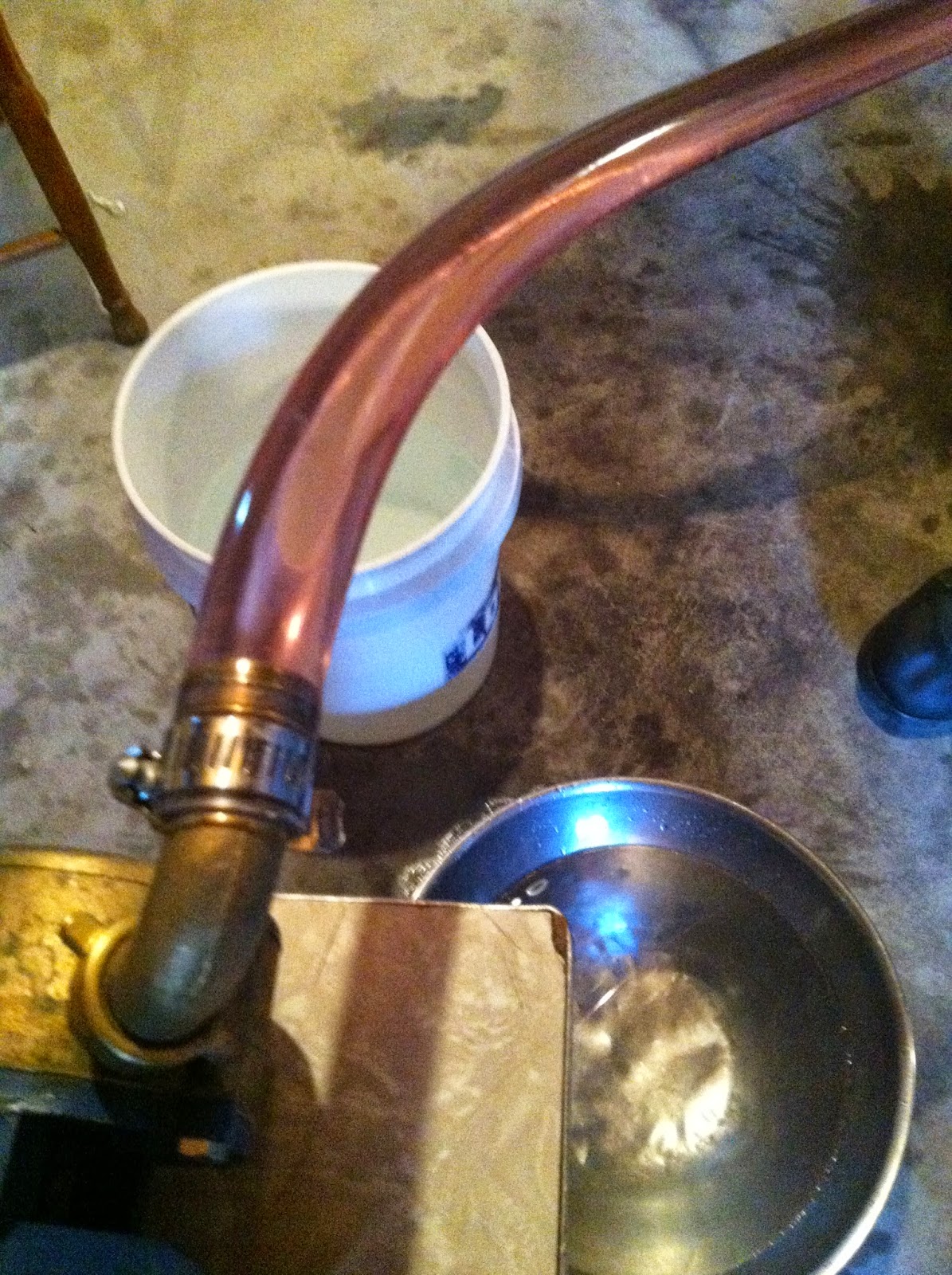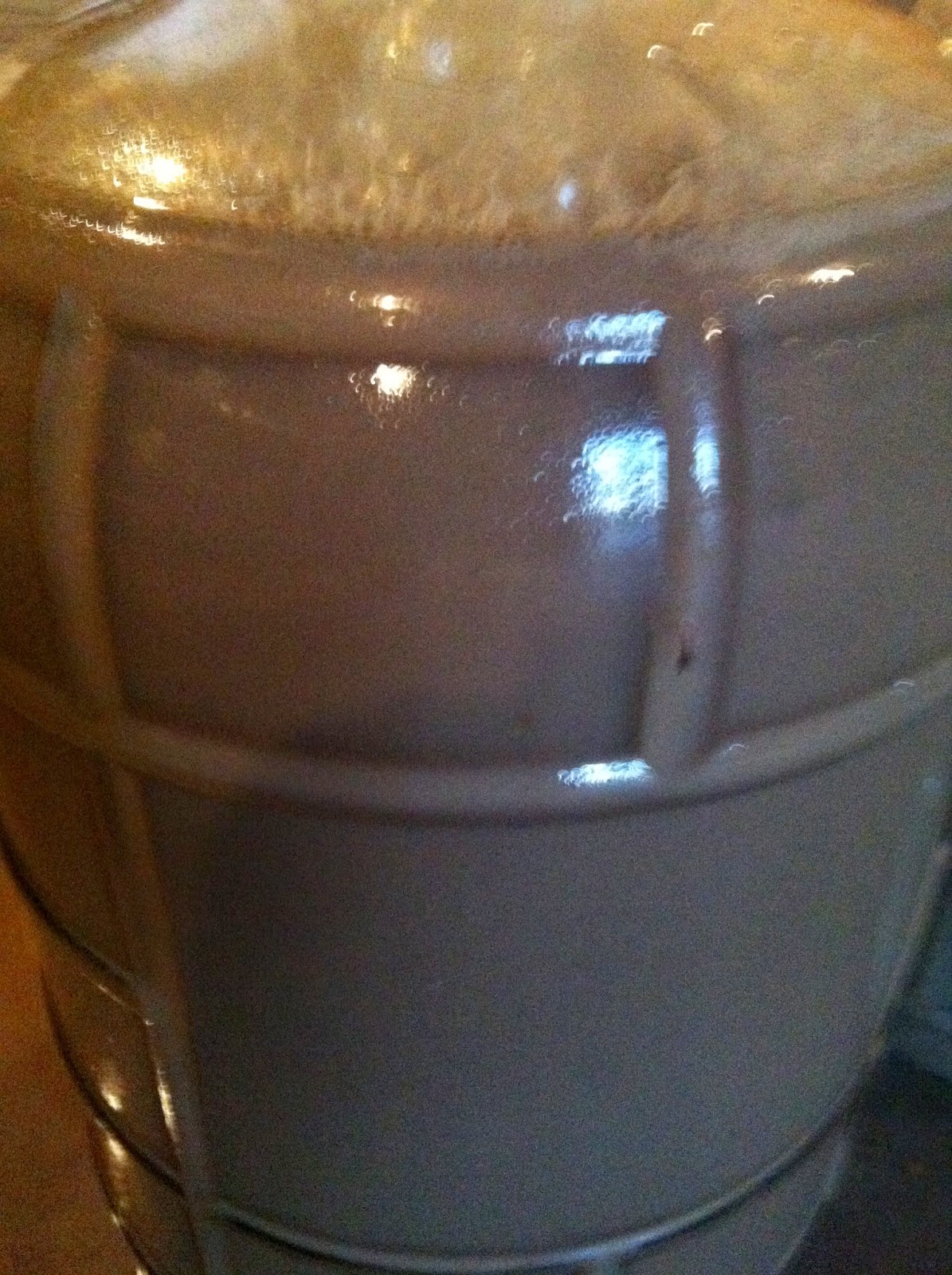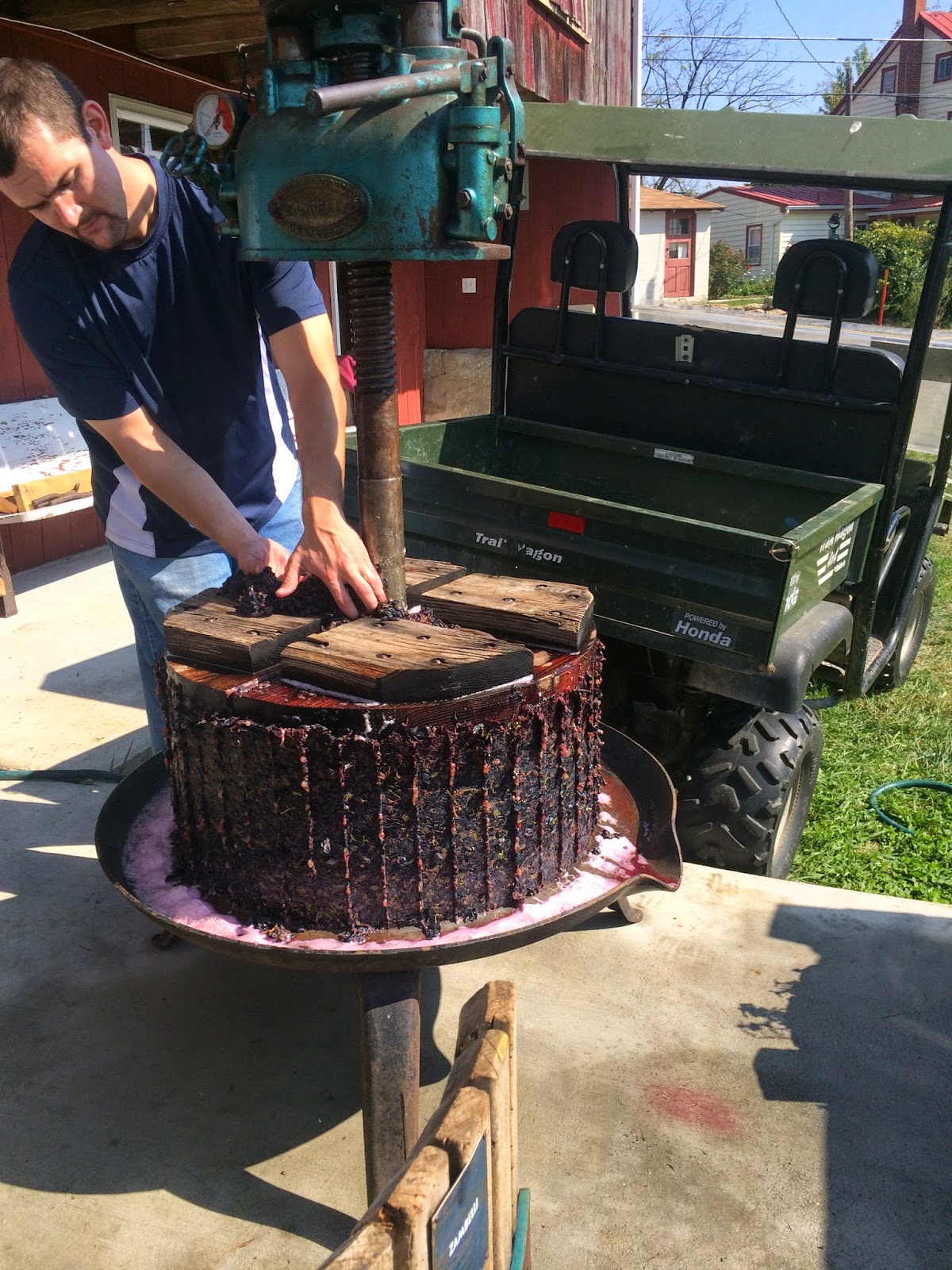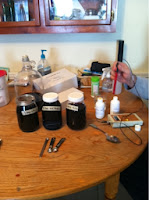| ice bag floating in the fresh juice |
We cooled the juice by dropping previously frozen and sealed ice bags into the wine, to keep the temperature around 65° F.
After treating the juice with SO2 and adding Pectinase, we covered the barrel and let the juice sit overnight. This should help with settling out impurities. We also took a juice sample to test the pH, sugar level and TA (total acidity).
Today we racked the clear juice into a new barrel – you can see the rose colored juice being pumped through a clear hose in the left picture. There was a surprising amount of “sludge” left near the bottom of the barrel, nearly 5 gallons. We racked the sludge into two small carboys to see if it would clear anymore (I just don’t see how it could).
We did the same with the 7 gallons of pressed juice, added the hydrated yeast to both containers and let the fermentation begin!














